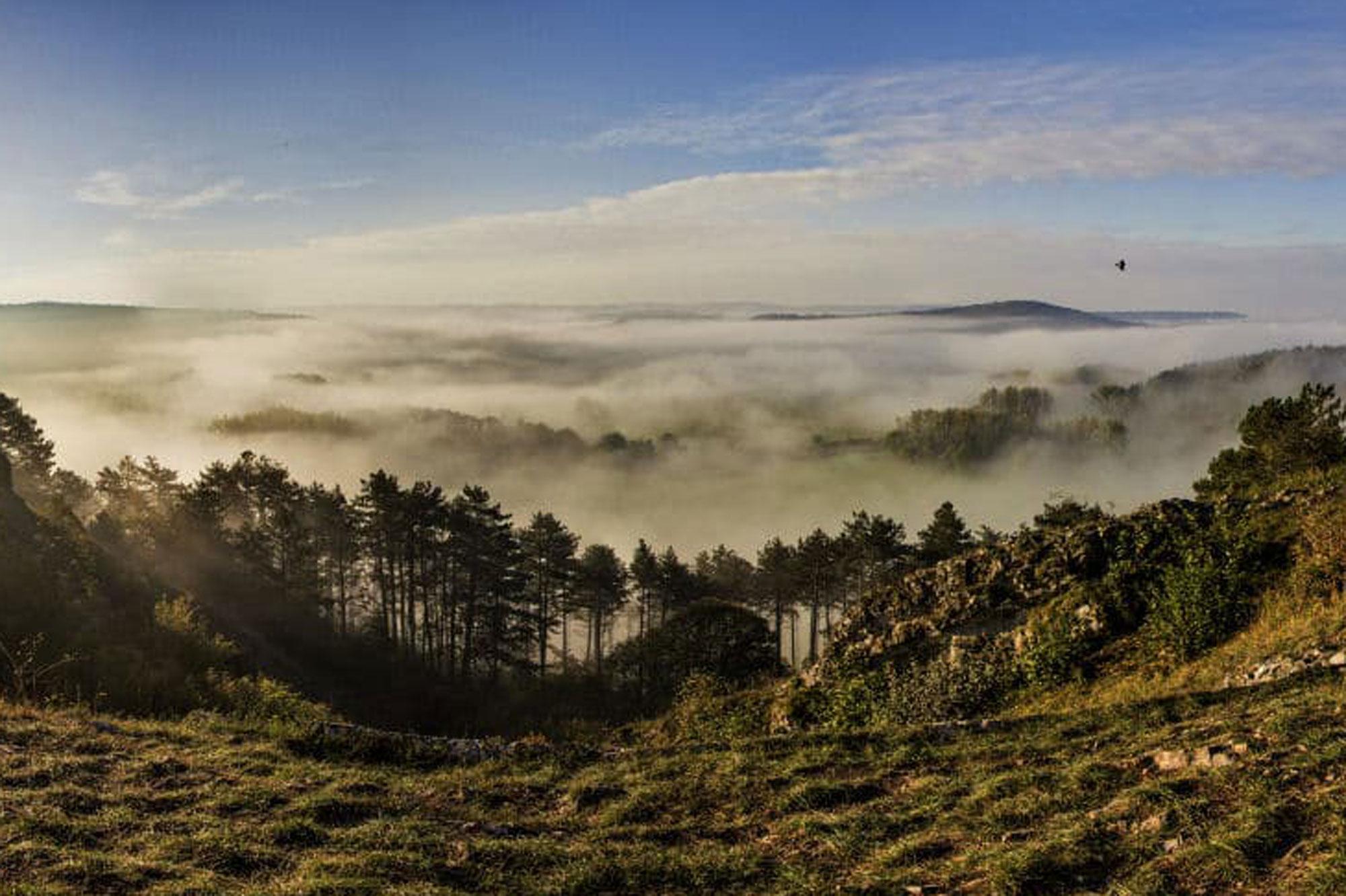The Earth is full of climate information. The Famenne-Ardenne region is no exception. This is why scientists have set up a Geopark here: a park where tourists and inhabitants are made aware of geosciences, in order to contribute to the fight against climate change.
“Most of what we know about the climate, we owe it to paleoclimatology”, explains Sophie Verheyden, researcher at the Brussels Institute of Natural Sciences. Paleoclimatology is the science that studies past climates and their fluctuations. In Belgium, Sophie Verheyden analyzes the stalagmites of the caves of the Famenne-Ardenne Geopark, “real information traps”.
Created in 2014, the Geopark Famenne-Ardenne is the only one in Belgium. It occupies a chalky strip of 915 km², i.e. eight municipalities (Beauraing, Durbuy, Hotton, Marche-en-Famenne, Nassogne, Rochefort, Tellin and Wellin) with more than 67,000 inhabitants. In 2018, it received the UNESCO label. Thus, the sites of the geographical area are recognized as being of international geological importance. They must therefore be managed according to a concept of protection, education and sustainable development.
Protect and enhance the natural heritage
This project was initiated by Sophie Verheyden. For the paleoclimatologist, the Famenne-Ardenne Geopark is a veritable playground for climate research. The geological heritage also serves to increase the knowledge of the inhabitants and visitors in geosciences. In this way, social issues such as climate change, the environment and natural and cultural heritage can be discussed.
In collaboration with the school of Marche-en-Famenne, a pilot project has been set up around the caves of Han-sur-Lesse, to raise students’ awareness of geosciences. These caves attract 300,000 visitors every year. Explanatory panels are installed and visits to the geosites are supervised by two geologists. “We want to make people aware of their environment through knowledge”, underlines the scientist. “We didn’t learn enough about climate change at school and it affects us now,” she laments.
Sustainability
The caves contain subterranean information fossilized in calcite: a mixture of calcium, carbon and oxygen. This allowed Sophie Verheyden to gather information on the environment of the region, and even of the continent. “We can go back 600,000 years and date major climate changes.”

The color, density and sediments that make up a stalagmite say a lot about the climatic events that took place. That the current climate change, with the dazzling increase in CO2level, is not the first to experience the Earth, for example. But she qualifies: “The last time was in the Cretaceous and we are not dinosaurs…. If it continues like this, we don’t know in what circumstances people will live,’ worries Sophie Verheyden. Moreover, today the environment is much poorer. “We are making our own environment unlivable. We must strive for sustainability. According to the scientist, the protection of the soil and subsoil is essential for the restoration of our environment.
Comforting
This future climate change is alarming. This is why the paleoclimatologist insists on the importance of behavioral change in humans. And that’s exactly what she wants to encourage with the Geopark. “We need to be aware of our impact and change our habits, even if it takes effort. We are already seeing a flood of protests from the younger generation and this is encouraging for the future.
“The geology is reassuring. It helps to take a step back and think about how to do things in a coherent and relevant way,” says Verheyden. According to her, everyone can contribute to this change of mentality. “We can still maintain a humanly sustainable situation. Every gesture counts to change mentalities.’
Green and educational tourism

Scientific research is carried out in close collaboration with the tourism sector. Alain Petit, director of Geopark Famenne-Ardenne, has worked in tourism for 25 years. He explains that the park project is also part of sustainable development, because it stands out in tourism for its scientific added value.
For example, geo-walks are organized, with geological and archaeological explanations of the environment and its biodiversity. Charters and codes of conduct are also used. “We must encourage good environmental behavior,” says Alain Petit. “We try to encourage visitors to sustainable tourism, respecting the environment.”

“Food expert. Unapologetic bacon maven. Beer enthusiast. Pop cultureaholic. General travel scholar. Total internet buff.”
 DodoFinance Breaking News Made For You!
DodoFinance Breaking News Made For You!
